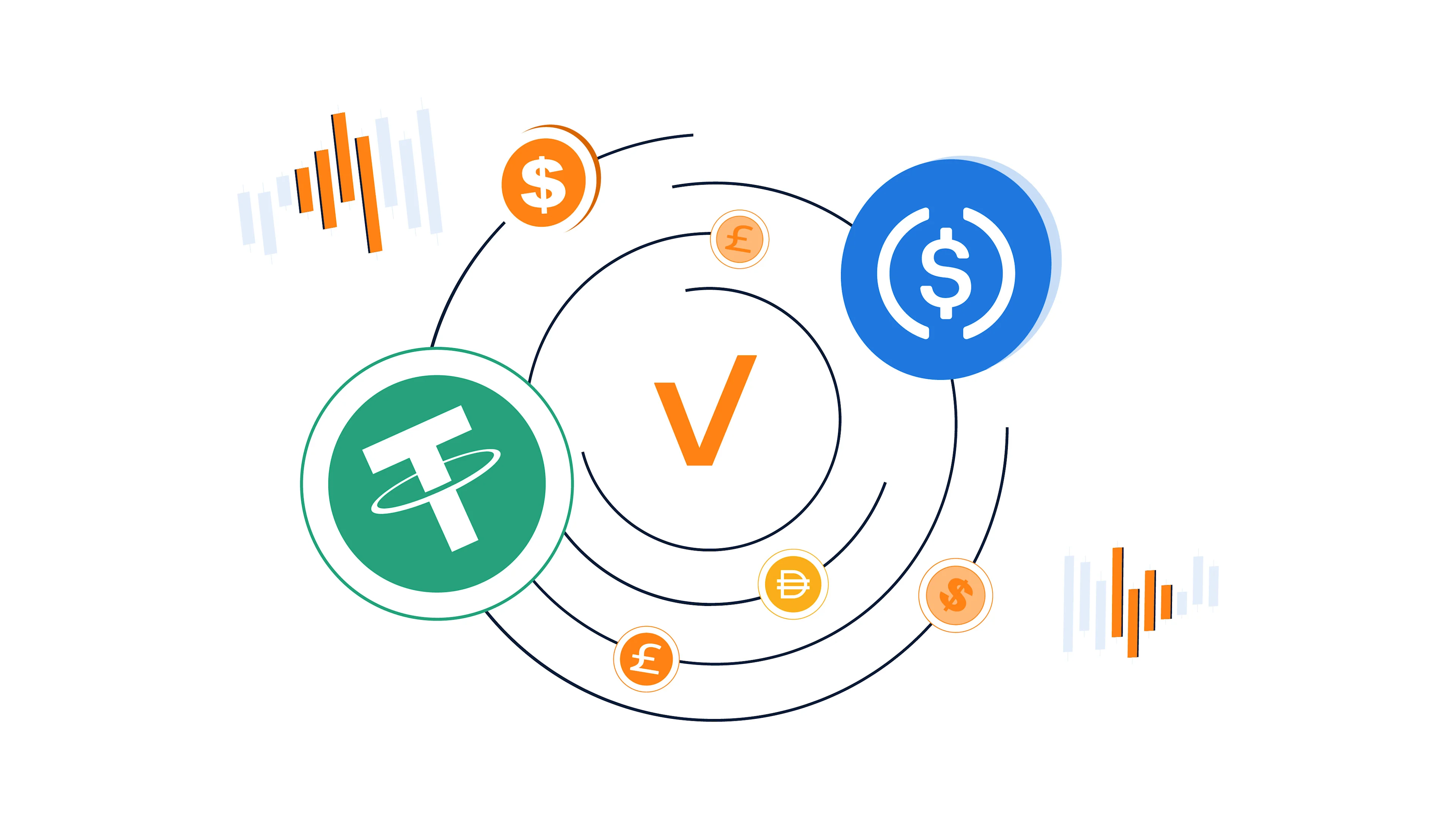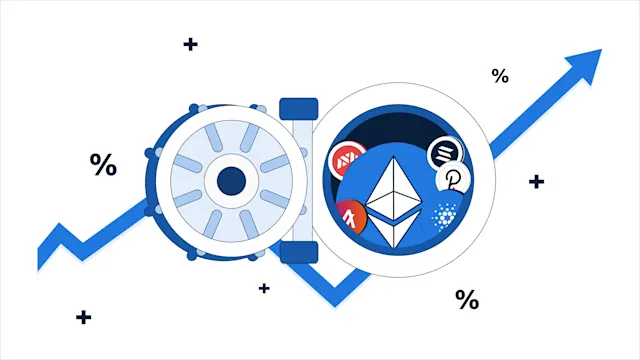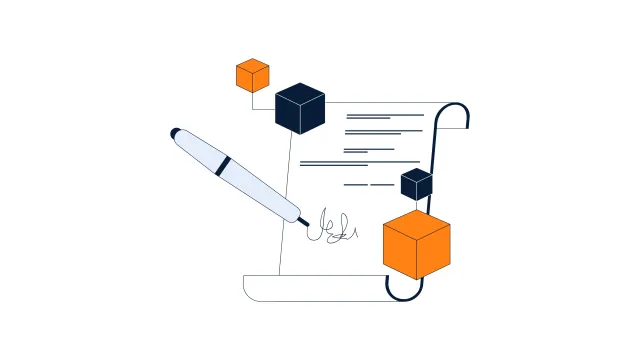
Stablecoins: What? How? and Why?
Unlike traditional cryptocurrencies, which can experience significant price fluctuations, fiat-collateralized stablecoins offer a stable value, making them a reliable medium of exchange and store of value.
The most common type of stablecoins is “Fiat-collateralized stablecoins”. Fiat-collateralized stablecoins are a type of cryptocurrency designed to minimize price volatility by being pegged to a reserve asset, such as a fiat currency (e.g., USD). Unlike traditional cryptocurrencies, which can experience significant price fluctuations, fiat-collateralized stablecoins offer a stable value, making them a reliable medium of exchange and store of value.
Biggest Examples of Fiat-Collateralized Stablecoins
Tether (USDT): The most widely used stablecoin, Tether is pegged to the US dollar and is backed by reserves of fiat currency.
USD Coin (USDC): Issued by Circle, USDC is also pegged to the US dollar and is known for its transparency and regulatory compliance.
Key Benefits of Fiat-Collateralized Stablecoins
Efficiency in Transactions
Fiat-collateralized stablecoins enable faster and cheaper cross-border transactions compared to traditional banking systems. This efficiency is particularly beneficial for remittances and international trade. In 2023, the total transaction volume of stablecoins surpassed $9 trillion! For context, this figure exceeds the transaction volumes of Mastercard and PayPal, and it is approaching VISA's mark of $10 trillion. By using stablecoins, individuals and businesses can significantly reduce transaction times and costs, facilitating smoother global commerce.
Stability
One of the primary advantages of fiat-collateralized stablecoins is their stability. Being pegged to the value of a fiat currency, these stablecoins provide all the benefits of digital currencies without the exposure to volatility. This makes them an attractive option for everyday transactions and a reliable store of value. The stablecoin market continues to grow year over year, currently boasting a market capitalization north of $160 billion.
Financial Inclusion
Fiat-collateralized stablecoins have the potential to extend financial services to unbanked and underbanked populations, offering them a reliable and accessible means to participate in the global economy. By leveraging stablecoins, individuals in regions with unstable fiat currencies or limited banking infrastructure can access a stable, digital form of money. As more fiat currencies experience high levels of devaluation and inflation, the flight to more stable assets, like stablecoins, is expected to continue. This trend can help promote financial inclusion and economic stability worldwide.
How the Peg Is Maintained
Maintaining the peg of a fiat-collateralized stablecoin to its underlying asset is crucial for its stability and reliability. The peg is maintained through the following mechanisms:
Reserves: Fiat-collateralized stablecoins are backed by reserves of fiat currency held in a bank account. For example, each USDT is backed by one US dollar held in reserve. This ensures that the stablecoin can be redeemed for its equivalent value in fiat currency at any time.
Transparency and Audits: Regular audits and transparent reporting help maintain trust in the peg. Issuers of fiat-collateralized stablecoins often provide regular attestations or audits of their reserves to demonstrate that they have sufficient assets to back the stablecoins in circulation.
Other Types of Stablecoins and Their Risks
While fiat-collateralized stablecoins offer stability and reliability, there are other types of stablecoins with different mechanisms for maintaining their peg. However, these can be riskier:
Crypto-Collateralized Stablecoins: Backed by other cryptocurrencies, these stablecoins are typically over-collateralized to account for price volatility in the underlying assets. An example is DAI, which is backed by Ethereum (ETH) and other cryptocurrencies. While innovative, they are susceptible to market fluctuations and require complex mechanisms to maintain stability.
Algorithmic Stablecoins: These stablecoins use algorithms and smart contracts to control the supply and maintain the peg. The recent high-profile collapse of TerraUSD (UST), an algorithmic stablecoin, highlights the risks associated with this type of stablecoin. TerraUSD's failure led to significant financial losses and demonstrated the inherent risks of relying on algorithmic mechanisms to maintain stability.
The Future of Stablecoins
Fiat-collateralized stablecoins are poised to play a significant role in the future of finance. As the digital economy continues to evolve, these stablecoins offer a bridge between the volatility of cryptocurrencies and the perceived stability of traditional currencies. Their ability to facilitate efficient transactions, provide stability, and promote financial inclusion makes them a cornerstone of the digital financial landscape.
At CoinMENA, we are committed to educating our users about the transformative potential of stablecoins and other digital assets. By understanding and leveraging the benefits of fiat-collateralized stablecoins, we can all participate in and contribute to the growth of the global digital economy.



